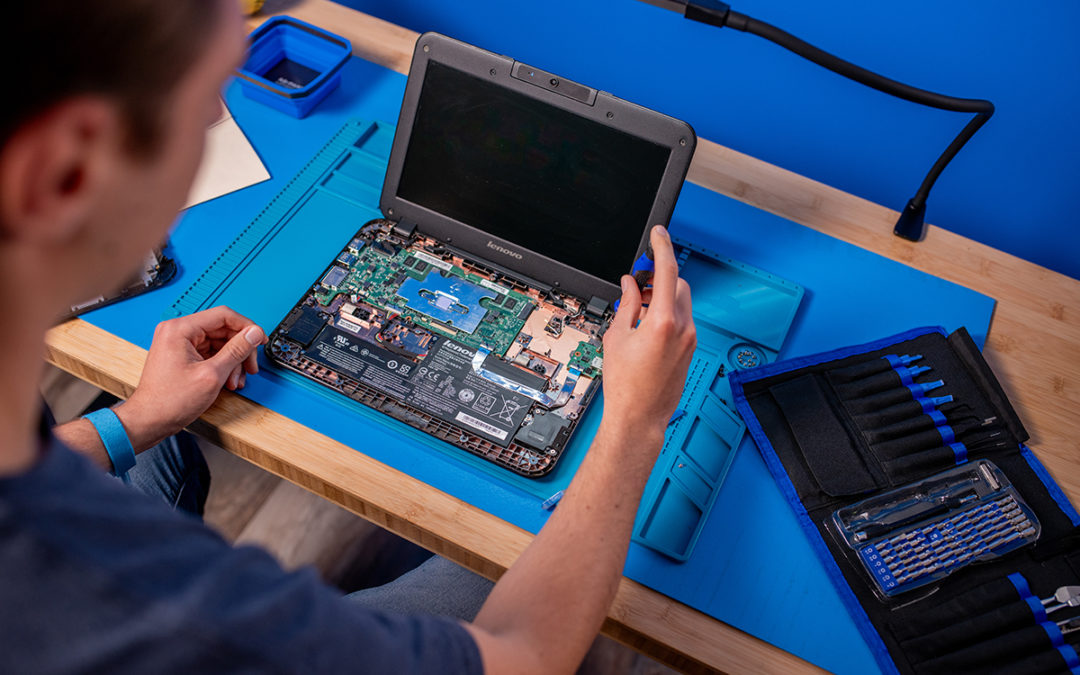We’ve all felt it before—the zing that comes from being shocked by a random object. What we often refer to as static electricity is electrostatic discharge (ESD). While ESD is mostly harmless when we experience it, it can affect tech like K-12 devices leading to product defects and unsafe conditions. This could be especially detrimental in the K-12 device environment with limited excess inventory and the need for fast repair turnaround. Today, we’ll discuss how to prevent ESD during K-12 device repair.
What is ESD?
ESD occurs when an electric discharge builds up and is transferred to another object. It can be accompanied by a visible spark and a popping sound.
How to Prevent ESD in K-12 Devices
The best way to prevent ESD is to create ESD-safe areas by taking precautions or using ESD-safe or anti-static materials. This can be done in multiple ways.
Check Your Space
As ESD affects K-12 devices during the repair process, evaluating your repair space is important. Where does your school perform its repairs? If possible, choose a room with linoleum or tile flooring over carpeting.
Take Appropriate Grounding Precautions
Grounding directs excess energy to the ground via a wire, dissipating any residual static electricity.
- Grounding your work area, including tables and chairs, is a great way to prevent static discharge from damaging your devices.
- You can also ground yourself using an anti-static wrist strap and silicone mat to reduce any static electricity.
Be Careful During Dry Seasons
Whether it’s winter or your district is in a drier climate, be careful when conditions are dry.
- You don’t have to measure the humidity levels precisely—your own body can be a good indicator of dryness.
- To mitigate static discharge, use an anti-static wrist strap to reduce static electricity.
AGParts Education can help your district prevent ESD with anti-static wrist straps and silicone mats. To get started, contact us today!



Recent Comments